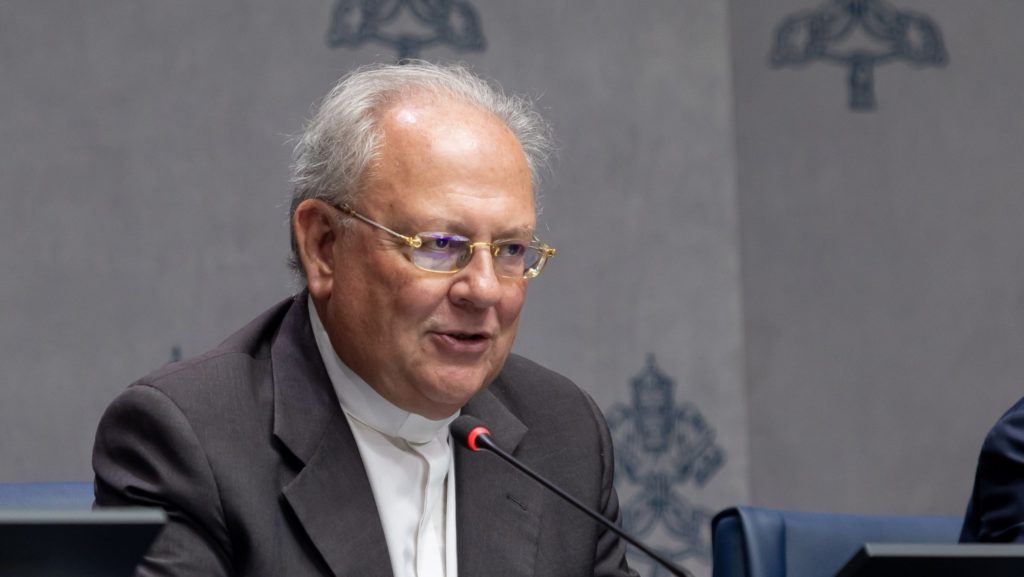In a Jubilee year dedicated to hope, Pope Leo XIV and Christian leaders will commemorate "new martyrs and witnesses of the faith" -- people whose lives were signs of hope to the people around them and who died firm in the hope of being welcomed into God's presence, said the secretary of the Vatican Dicastery for the Causes of Saints.
Archbishop Fabio Fabene, dicastery secretary, told reporters Sept. 8, "Pope Leo hopes the blood of these martyrs will be seeds of peace, reconciliation, fraternity and love."
Like St. John Paul II did during the Holy Year 2000, Pope Leo will preside over an ecumenical prayer service for the Jubilee 2025 commemorating Catholics, Orthodox, Anglicans and Protestants who died for their faith between 2000 and 2025.
Pope Francis had established a commission in 2023 to compile "a catalogue of all those whose blood was shed to confess Christ and witness to his Gospel" in the 25 years since the last Holy Year.
Those martyrs -- Catholic, Orthodox, Anglican and Protestant -- will be remembered Sept. 14, the feast of the Exaltation of the Cross, during a prayer service at Rome's Basilica of St. Paul Outside the Walls, a frequent site for ecumenical prayer.
At a news conference Sept. 8, Andrea Riccardi, a historian and vice president of the commission, said the catalogue includes 1,624 Christians whose names were submitted by bishops' conferences, religious orders and nunciatures from all over the world.
Riccardi, who also is founder of the lay Community of Sant'Egidio, also gave a continental break down of those slain: 643 people in Africa; 357 in Asia and Oceania; 304 in North and South America; 277 in the Middle East and North Africa; and 43 in Europe, although 110 of the total killed on other continents were missionaries from Europe.
Archbishop Fabene said the Vatican still was studying how, when and if to publish the names in the catalogue, taking into consideration the possibility that doing so could endanger other Christians living and ministering in the same geographical areas.
"They set the anchor of their hope in God, not in the world," the archbishop said; "they hoped in the Lord and their reward will be eternal life."
In addition, said Msgr. Marco Gnavi, secretary of the commission, "The hope that was the motif of their lives before their deaths brought hope" in contexts where their brothers and sisters often were the victims of ethnic conflict, religious persecution, organized crime or the deadly denial of their rights.
For example, the commission members said, the list includes Sister Dorothy Stang, a U.S. member of the Sisters of Notre Dame de Namur, who was shot and killed in the Brazilian Amazon in 2005 for defending the land rights of the Indigenous and poor farmers.
Father Angelo Romano, a member of the commission and official at the Dicastery for the Causes of Saints, told Catholic News Service the catalogue is not part of the official Catholic process for recognizing the martyrdom of a potential saint, however, some of the people included already have a sainthood cause underway, and other causes could begin in the future.
The ecumenical commemoration St. John Paul presided over in 2000 was held at Rome's Colosseum, a symbol of Christian persecution and martyrdom. Father Romano said the Vatican "would have loved" to do the 2025 prayer service there, but the city of Rome has new archaeological digs just outside the Colosseum, which severely limits the space available for participants.
Knowing that, as Pope Francis often said, the number of Christians martyred today is more than in the first centuries of Christianity should not lead Catholics to feel under attack but should motivate solidarity, Father Romano said.
"A society that may even be aggressive toward the Christian faith is one thing; being persecuted is another," he said. "Persecution means that going to Mass is a risk, that praying is a risk, that being a Christian is a risk, that practicing charity in the name of faith is a serious risk."
"Another mistake that I think we must avoid when talking about martyrdom -- a mistake in the strictly theological sense -- is trying to understand martyrdom only in quantitative terms: how many there are," the priest said.
The numbers help people understand the scale of the phenomenon, he said, "but theologically we must be careful not to focus too much on quantity, because even one martyr is immense, enormous -- a reason for reflection for the whole church."
"In a world where there is so much to worry about, including increased violence at all levels, the martyr witnesses to nonviolent hope," Father Romano said. "A martyr chooses not to respond to evil with evil, not to respond to hatred with hatred, but with love."
Several of the groups of new martyrs mentioned at the news conference were Christians killed in church during terrorist attacks.
Archbishop Fabene was asked if Fletcher Merkel, 8, and Harper Moyski, 10, who were shot and killed during a school Mass at Annunciation Catholic Church in Minneapolis Aug. 27 could be considered martyrs.
"If a diocese or other local ecclesial realties present these figures to us as witnesses of the faith, we will examine them and will see if they can be included in the list," he said.

